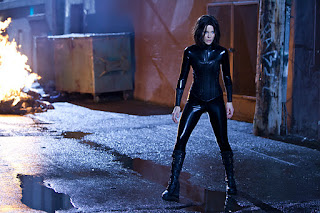FX TEAM OF “PLANES: FIRE & RESCUE” FUELS `HOTTEST' ANIMATED FILM EVER
From
the beginning, Disneytoon's “Planes: Fire & Rescue” was
destined to break new ground. “Not only is it the biggest visual
effects movie we’ve ever done here at Disneytoon Studios,” says
producer Ferrell Barron, “nobody had ever really attempted to do an
animated movie featuring fire of this magnitude before—the size,
scope, scale and frequency of smoke and fire in this is really
extraordinary. So the first thing we had to do is dig into the
effects side of the film, because it was so important that we get
fire right. It had to be real.”
John
Patton was tapped as the effects animation lead for the film. “Out
of 1224 total shots in the film, more than half feature some kind of
effect: fire, smoke, water. And ‘fire’ is in the title of the
film—it’s a key element in the story—we had to make sure we
nailed it.”
So
the team studied the science of fire through online research, books
and talking to a host of firefighters. Says Patton, “We referenced
a lot of live-action fire footage to understand how it looks from
different distances and with varying intensity. A lot of
variables—the fuel source, weather, size—affect how a fire
looks.”
So
the team studied the science of fire through online research, books
and talking to a host of firefighters. Says Patton, “We referenced
a lot of live-action fire footage to understand how it looks from
different distances and with varying intensity. A lot of
variables—the fuel source, weather, size—affect how a fire
looks.”
Filmmakers
decided to build a library of smoke and fire, creating more than 80
effects with more than 800 frames each that could be selected by
effects artists and adjusted to fit the needs of the scene. They were
able to select and dial up or down accompanying smoke, too. “The
idea was to create and shoot fire from various distances with
differing details,” says Patton. “Each one can be very
time-consuming, so rather than reinvent the wheel every time, we
created a library of options that could be used to populate a scene
with a number of unique fire effects.”
But
not every fire in the film comes from the library. Patton estimates
that half of the fire in the film was custom designed. “If it was
something that needed very specific art direction from the director—a
specific look, motion or timing to the fire—we did a custom
simulation.”
Filmmakers
also had to be aware of the level of light each fire might emit,
taking into consideration the time of day and the scope of the fire.
Says Patton, “In the Augerin Canyon sequence with a massive blaze,
we had to be careful about having everything go completely red or
orange. We wanted it to be threatening, but not overpower the
action.”
The
climactic sequence included a 571-frame shot, according to Patton.
“Dusty flies through what we like to call an effects
extravaganza—water, smoke and atmospherics like smoke and
embers—and ends up in the valley that’s entirely ablaze. That was
a big challenge for the team, but it all came together: the lighting,
the flight, the camera composition and the effects—I think
everybody is proud of that shot.”
Opening
across the Philippines on August 20 in 3D and 2D cinemas, “Planes:
Fire & Rescue” is distributed by Walt Disney Studios Motion
Pictures through Columbia Pictures.



Comments
Post a Comment